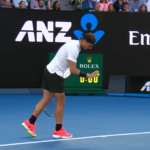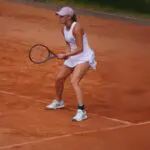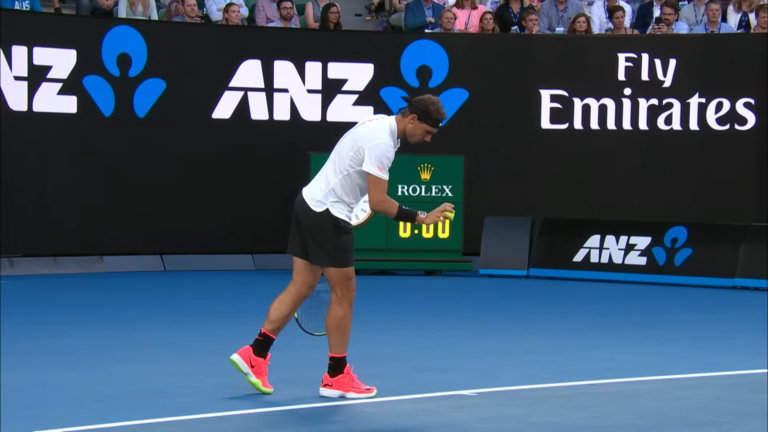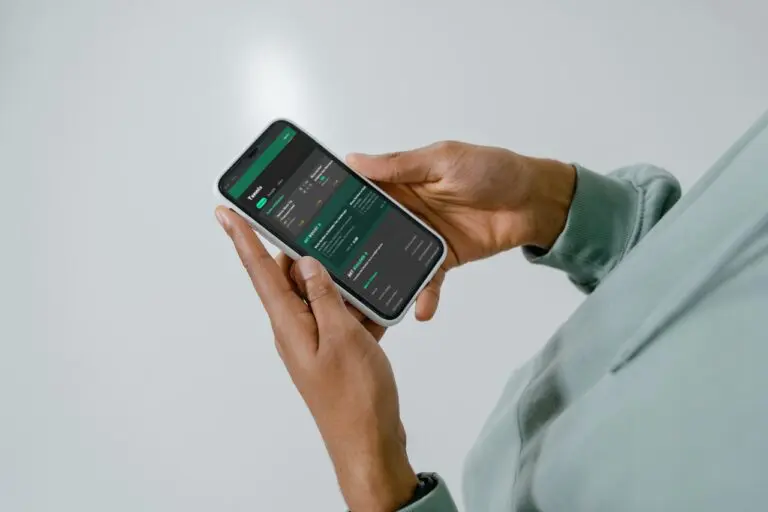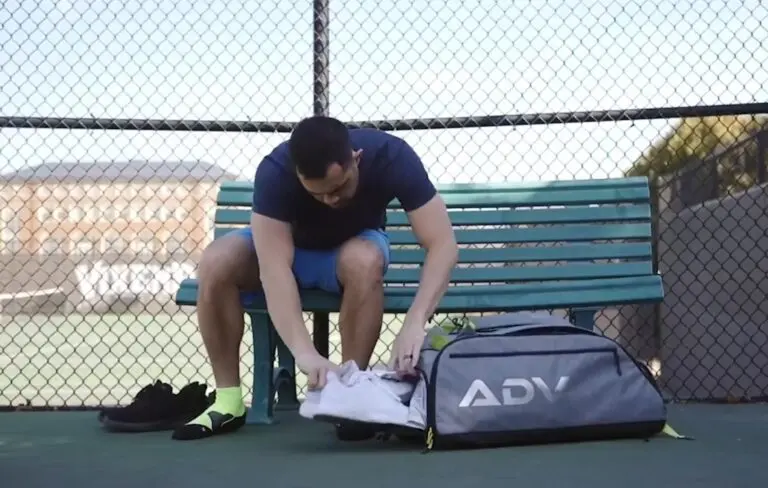In the world of tennis, doubles play offers a unique blend of strategy, teamwork, and skill that you won’t find in singles matches. While the core principles of tennis remain the same, doubles play introduces new dimensions that can either elevate your game or expose your weaknesses.
This blog post aims to equip you with essential rules and tips that can help you and your partner be responsible for every victory on the doubles court.
Singles vs. Doubles
When I’m on the court coaching players or participating in exhibition matches, I often notice how different the games of singles and doubles tennis can be, even though they share the same foundational rules. In singles, it’s just you, your opponent, and the court. Every shot you make, every strategy you employ, it’s all on you. I’ve seen players thrive in this environment, where their individual skills—be it a powerful serve or a killer backhand—can shine.
- Solo Mastery: In singles, your success is directly tied to your own skills and mental fortitude.
- All on You: You’re the strategist, the executor, and the one who either celebrates victory or learns from defeat.
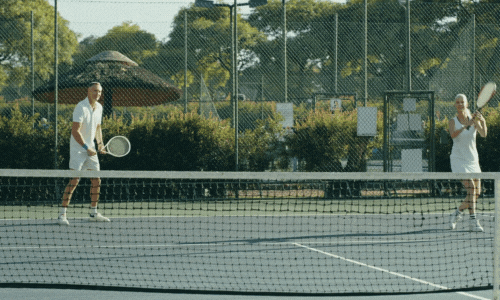
In contrast, doubles is a collaborative effort. I’ve played matches where the chemistry with my partner was so in sync that we could anticipate each other’s moves effortlessly. In doubles, you’re sharing not just the court but also the responsibilities. One player might excel at the net, cutting off angles and executing volleys, while the other might be a baseline specialist, setting up points with deep groundstrokes.
- Synergy is Key: Your effectiveness as a doubles team is often greater than the sum of your individual skills.
- Divide and Conquer: Each player can focus on specific roles, making the team more versatile and harder to beat.
Switching between these two formats can be both a challenge and an opportunity for growth. I’ve found that the court awareness and strategic depth required in doubles have made me a more thoughtful singles player.
On the flip side, the focus and individual skill set honed in singles play have made me a more reliable and effective doubles partner. Adaptability is crucial, and mastering both formats can give you a significant edge, no matter which side of the court you’re on.
Doubles Tennis Serving Rotation
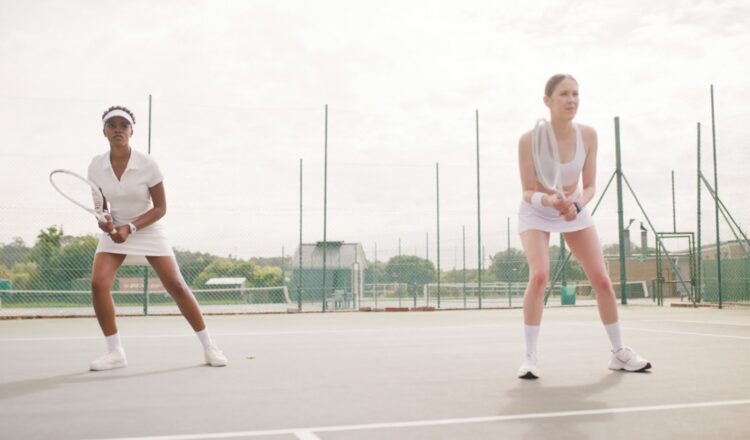
Unlike singles, where you serve every other game, doubles introduces a rotation involving all four players. This adds an extra layer of strategy and complexity, as you need to consider not just your own serving strengths and weaknesses, but also those of your partner.
- Four-Player Rotation: Each player serves in turn, following the sequence established at the start of the set.
- Strategic Choices: The server can decide on the type of serve and the initial point of attack, while the partner prepares for the next shot.
In my coaching sessions and during my own matches, I’ve found that a well-planned serving rotation can be a game-changer. For instance, if one partner has a particularly strong serve, you might want to position them to serve at critical moments, like a tie-break or when facing a break point. It’s not just about power; it’s also about placement and spin. A well-placed serve can set your partner up for an easy volley or force your opponents into a defensive position.
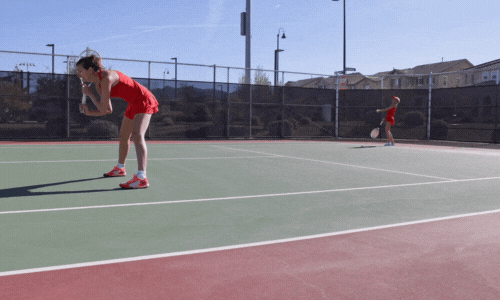
However, serving in doubles isn’t just about the person holding the racket; the partner at the net also plays a crucial role. Effective net play can intimidate opponents and force errors, making it easier for the server to hold serve. I’ve been in situations where my partner’s net presence was so dominant that it took the pressure off my serve, allowing me to focus on placement rather than power.
- Net Presence: The net player can make or break a service game with effective volleys and intimidating positioning.
- Teamwork: A well-coordinated team can make serving seem like a two-player effort rather than an individual task.
Understanding and mastering the intricacies of serving rotation in doubles tennis can significantly impact your success on the court. It’s not just about individual skill; it’s a team effort that requires strategy, communication, and the ability to adapt to ever-changing match situations.
Opt To Receive: Deuce Court or Advantage Court
When it comes to receiving serve in doubles tennis, players have the option to position themselves in either the deuce court (the right side of the court) or the advantage court (the left side). This choice is far from arbitrary; it’s a strategic decision that can influence the outcome of the match. In my years of coaching and playing, I’ve seen how this choice can either set a team up for success or expose vulnerabilities.
- Deuce Court: Generally for players who are comfortable with forehand returns.
- Advantage Court: Often chosen by players who have strong backhand returns.
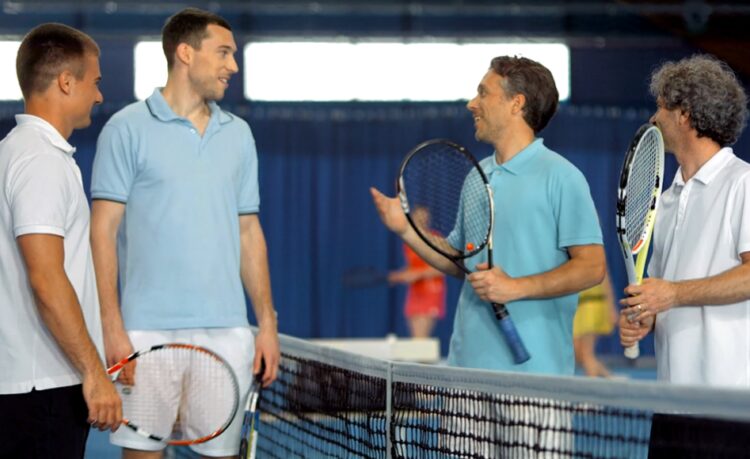
In the deuce court, you’ll primarily be hitting forehand returns, which for many players is the stronger and more comfortable shot. I’ve coached players who excel at ripping forehand returns down the line or cross-court, putting immediate pressure on the serving team. If you or your partner has a particularly strong forehand, the deuce court can be an excellent position from which to dictate play.
- Forehand Strength: Use the deuce court to capitalize on a strong forehand return.
- Offensive Play: A strong forehand return can immediately put the serving team on the defensive.
On the other hand, the advantage court will have you primarily hitting backhand returns. Some players, myself included, prefer this court because a well-executed backhand can be just as effective as a forehand, if not more so. The backhand return often allows for greater angle variety, and for those who employ a two-handed backhand, it can provide more control and stability.
- Backhand Versatility: The advantage court is ideal for players with a reliable and varied backhand.
- Defensive Options: A strong backhand return can neutralize a powerful serve, setting up the point for your team.
Your choice between the deuce and advantage courts should also consider your partner’s strengths and weaknesses. For example, if both of you have strong forehands but weaker backhands, you’ll need to decide who is more comfortable stepping out of their comfort zone to play the advantage court. The decision isn’t set in stone; teams can switch sides between sets, offering the flexibility to adapt your strategy as the match progresses.
- Partner Compatibility: Your choice should complement your partner’s skills and preferences.
- Adaptability: Don’t be afraid to switch sides if the initial choice isn’t yielding results.
Don’t Speculate, Communicate
In doubles tennis, communication is not just a recommendation; it’s a necessity. I’ve seen countless matches where a lack of communication led to unforced errors, missed opportunities, and ultimately, defeat. When you’re sharing a court, every movement, every shot, and every strategy involves both you and your partner.
- Verbal Cues: Simple calls like “mine,” “yours,” or “let” can prevent collisions and ensure that the best-positioned player takes the shot.
- Non-Verbal Signals: Hand signals behind the back can indicate where the server plans to place the serve, helping the net player anticipate the return.
In my own experience, both as a coach and a player, effective communication starts long before the match. Discuss strategies, strengths, weaknesses, and preferences with your partner. Know who is comfortable at the net and who prefers the baseline. Understand each other’s serving patterns and return preferences.
- Pre-Match Planning: Discuss strategies and preferences before stepping onto the court.
- In-Game Adjustments: Use changeovers and breaks to reassess and tweak your game plan.
Once the match is underway, continuous communication becomes crucial. Whether it’s a quick “good shot” to boost morale or a more detailed discussion during a changeover about adjusting strategy, never underestimate the power of effective communication. I’ve been in matches where a quick strategy discussion turned the tide in our favor, helping us break serve or hold serve at a critical moment.
- Positive Reinforcement: Quick compliments can boost team morale and confidence.
- Strategic Discussions: Use downtime to discuss what’s working and what needs adjustment.
A well-coordinated team that communicates effectively can often outplay a technically superior but less coordinated opponent.
The Doubles Tennis Tie-Breaker
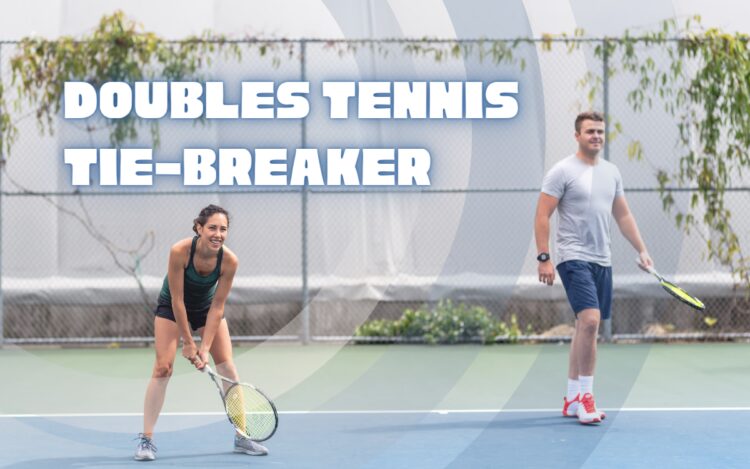
The tie-breaker in doubles tennis is a high-stakes, high-pressure situation that can determine the outcome of an entire set or match. Unlike regular games where you have the luxury of time to find your rhythm, a tie-breaker is a sprint to the finish line. In my years of coaching and playing, I’ve found that the tie-breaker often magnifies the importance of every serve, return, and volley, requiring impeccable focus and coordination between partners.
- Pressure Points: Every point in a tie-breaker carries significant weight, often making or breaking the set or match.
- Quick Decisions: With fewer points to play, each decision must be made quickly and effectively.
- Serving Shifts: The two-point serving rotation can be a game-changer, for better or worse.
- Net Play: Effective net presence during a tie-breaker can secure crucial points and swing momentum.
Alternative Doubles Competition
Traditional doubles tennis is just one way to enjoy the game. Over the years, various alternative formats have gained popularity, offering a different set of challenges and excitement. Whether you’re a seasoned doubles player looking for a new twist or someone who wants to dip their toes into doubles play without the full commitment, these alternative formats can provide a refreshing change.
- Mixed Doubles: Combines male and female players on each team, adding an extra layer of strategy regarding shot selection and positioning.
- Australian Doubles: One player teams up against a doubles pair but gets to use the alleys, making it a unique test of skill and endurance.
In my coaching sessions and exhibition matches, I’ve had the opportunity to try out many of these formats. Mixed doubles, for instance, brings a unique dynamic, as the difference in playing styles between men and women can make for interesting strategies. Australian Doubles, on the other hand, is a fantastic way to improve court coverage and shot selection, as the solo player has to cover more ground.
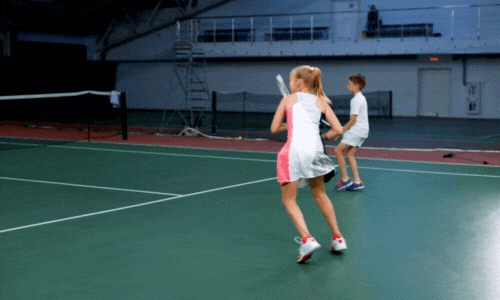
These alternative formats not only offer a break from the norm but also allow you to work on specific areas of your game that you might not focus on in traditional doubles. So, if you’re looking to shake things up and challenge yourself in new ways, give these alternative doubles competitions a try. You might just find a new favorite way to play the game you love.
FAQ
What is the court size for doubles tennis?
The court size for doubles tennis measures 78 feet long and 27 feet wide for doubles matches.
Can players from the same team stand anywhere on their side of the court?
Yes, players from the same team can stand anywhere on their side of the court as long as they do not hinder their opponents or violate any rules.
Can a player reach over the net to hit the ball in doubles tennis?
No, a player cannot reach over the net to hit the ball in doubles tennis. Players must hit the ball on their own side of the net.
Is there any specific order in which the players on a doubles team should hit the ball?
There is no specific order in which the players on a doubles team should hit the ball. They can decide amongst themselves who will hit the ball.
What happens if a player unintentionally touches the net during play in doubles tennis?
If a player unintentionally touches the net during play in doubles tennis and it does not affect the point, it is generally not considered a violation. However, if it does affect the point, the opponents will be awarded the point.
Are there any specific strategies or tips for success in doubles tennis?
Yes, some strategies and tips for success in doubles tennis include effective communication with your partner, utilizing teamwork and coordination, playing aggressive net play, and using strategic positioning to cover the court efficiently.
The Bottom Line
In doubles tennis, the path to victory is paved with strategic choices, effective communication, and seamless teamwork. Armed with these insights and tips, you and your partner can elevate your doubles play, turning every match into an opportunity for a well-earned win.
Related:
- Top 19 Best Tennis Bags 2024 [Unbiased Reviews]
- 20 Best Tennis Shoes 2024 - Stylish and Athletic
- 18 Best Tennis Racquets 2024 - Exclusive Reviews &…
- 15 Best Tennis Racquet for Beginners & Intermediate…
- 15 Best Tennis Balls 2024 - USTA and ITF Approved
- Top 16 Best Pickleball Paddle 2024 - Step Up Your Game



